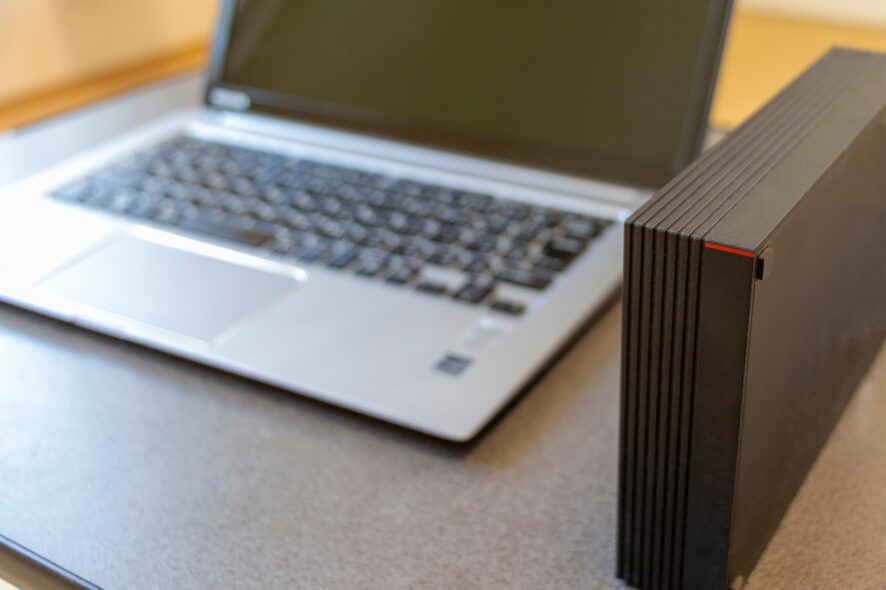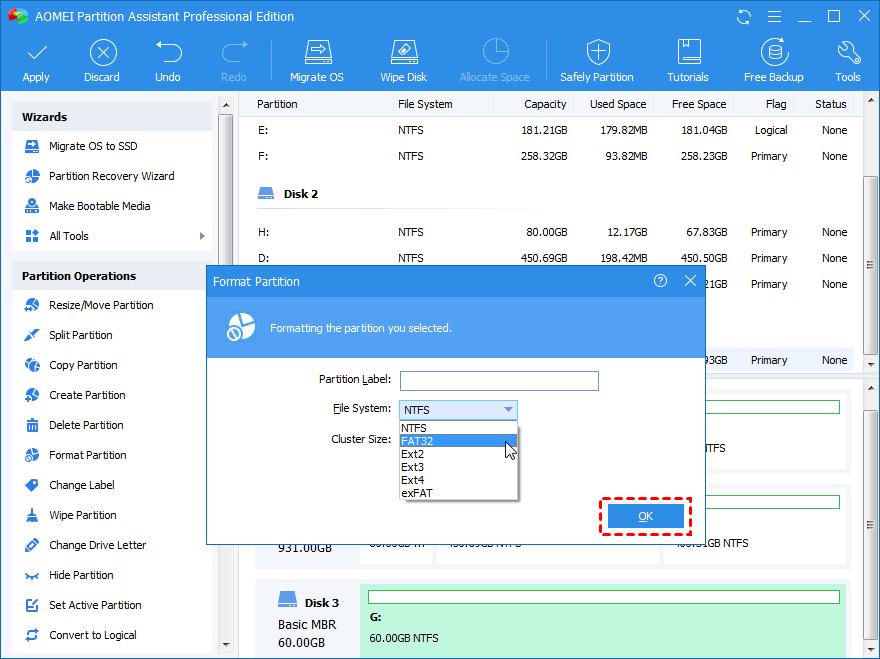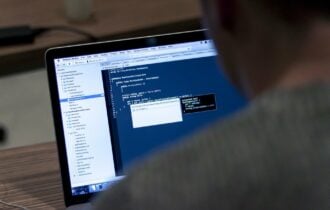FIX: Setup was unable to use the existing partition
5 min. read
Updated on
Read our disclosure page to find out how can you help Windows Report sustain the editorial team Read more
Key notes
- The Setup was unable to use the existing partition error will prevent you from installing Windows.
- Usually, this issue occurs when the partition you are trying to use is not completely empty.
- Formatting the problematic drive can solve this problem quickly so make sure you try it.
- You should also consider using third-party drive management software that is a lot easier to use.

I know that many of you tried to roll back to a previous Windows version at one point or another. In this case, we are going to talk a bit about rolling back from Windows 10 to Windows 7 or Windows 8.1.
In this article, you will learn what you can do in order to fix Windows 10 and get rid of the error message Setup was unable to use the existing partition because it does not contain the required free space.
Usually, the error message appears when you have additional hard drives connected to your device or the partition you are trying to install Windows 10 on is not completely blank.
First of all and most importantly, you will need to create a backup copy of your current files, folders, and any other important documents to prevent any future issues before attempting the steps below.
How do I fix an existing partition that cannot be used?
- Format the problematic partition
- Unplug all peripherals
- Remove all partitions
- Create a new boot partition
1. Format the problematic partition
1.1 Format the partition using the installation media
- Turn on your Windows 10 device.
- After the device started, insert your Windows 10 Installation Media into the CD or DVD ROM.
- Reboot your Windows device with the installation media inserted.
- It will ask you to press any key to boot from the CD or DVD.
- Follow the instructions and press any key on the keyboard to boot from the CD or DVD.
- In the first window that appears from the installation media, select your language.
- After you are done, click on the Next button.
- Select the Install Windows button.
- In the Enter the product key to activate Windows window, type the Windows 10 product key.
- The next page will be Please read the license terms
- Simply need to check the I accept the license terms box and then hit Next.
- The system will now ask you which type of installation you prefer.
- Click on the Custom button.
- You will be prompted to provide the location where you want to install Windows.
- Select the Drive options (advanced) feature.
- Select the partition where you want to install Windows 10.
- Click on the Format feature and keep following the on-screen instructions.
- After you are done, select the Next button.
- Follow the on-screen instructions and finish your Windows 10 install process.
- Reboot your device once more and you are done.
As explained, after you made the necessary backup copy of your important data, you will need to completely format the partition you wish to install Windows 10 on.
If you don’t know how to create Windows installation media, we have an excellent guide that will help you do that.
You can also use dedicated software to format your partition, just like the one recommended below.
Using this tool will be far much easier than following all of the steps mentioned above.
1.2 Format the partition using a dedicated drive management tool
- Download and install the software using the link below.
- Launch the program.
- Choose the troublesome partition and select Format Partition.
- Select the partition settings that include: Label, File system and The cluster size.
- Confirm your choices, and then select Proceed.
Ultimately, with this specialized partition management software, you get the opportunity to manage your hard drive securely before performing a restore or backup action, thus keeping all the information intact.
2. Unplug all peripherals
- Unplug any USB sticks and peripherals that might be connected to your device.
- Reboot your Windows 10 operating system without plugging in any of them.
- Try running the setup process again and see if you still get the same message telling you that you do not have enough free space.
Although it seems unusual, the connected peripherals can lead to this issue so unplugging them is a smart decision.
3. Remove all partitions
- Open the partition selection screen, disconnect the USB drive and select Next.
- The error message Windows is unable to install to the selected location should appear on the screen.
- Now, simply plug your USB drive back in and click Refresh, and then Next.
- The process should resume.
Some users confirmed they quickly solved this problem by removing all partitions on the drive and unplugging the USB drive so follow the steps above to do so.
4. Create a new boot partition
- When the setup error pop-up appears on the screen, go to Start, enter diskpart.exe, and press Enter.
- In the Diskpart window, type the following commands:
list disk– this will list all the disks available on your computerselect disk=0– keep in mind that disk 0 is your destination drive and all data stored on this drive will be deleted.create partition primary size=x– Replace x with the actual size of the new partition.select partition=1activeformat fs=ntfs quickassignexit
- Open your USB flash drive and copy the files from your USB drive to your C drive.
- Run the following commands to make your C: drive bootable:
bootsect /nt60 c:bootsect /nt60 c: /mbr
- You can now remove the USB drive from your PC.
- Restart your machine and go to Windows Setup and click on the Install Now option.
If nothing worked, try creating a new boot partition manually. Although this method may seem a bit complicated, follow the instruction below and you should be able to solve the problem in just a few minutes.
That’s it, the error message Setup was unable to use the existing partition because it does not contain the required free space should no longer appear on the screen.
As this issue can be easily solved by correctly partitioning your drives, check out the best partitioning software tools that can help you quickly manage your drives.
If you need additional help, you can use the comments section below and we will help you further as soon as possible.














